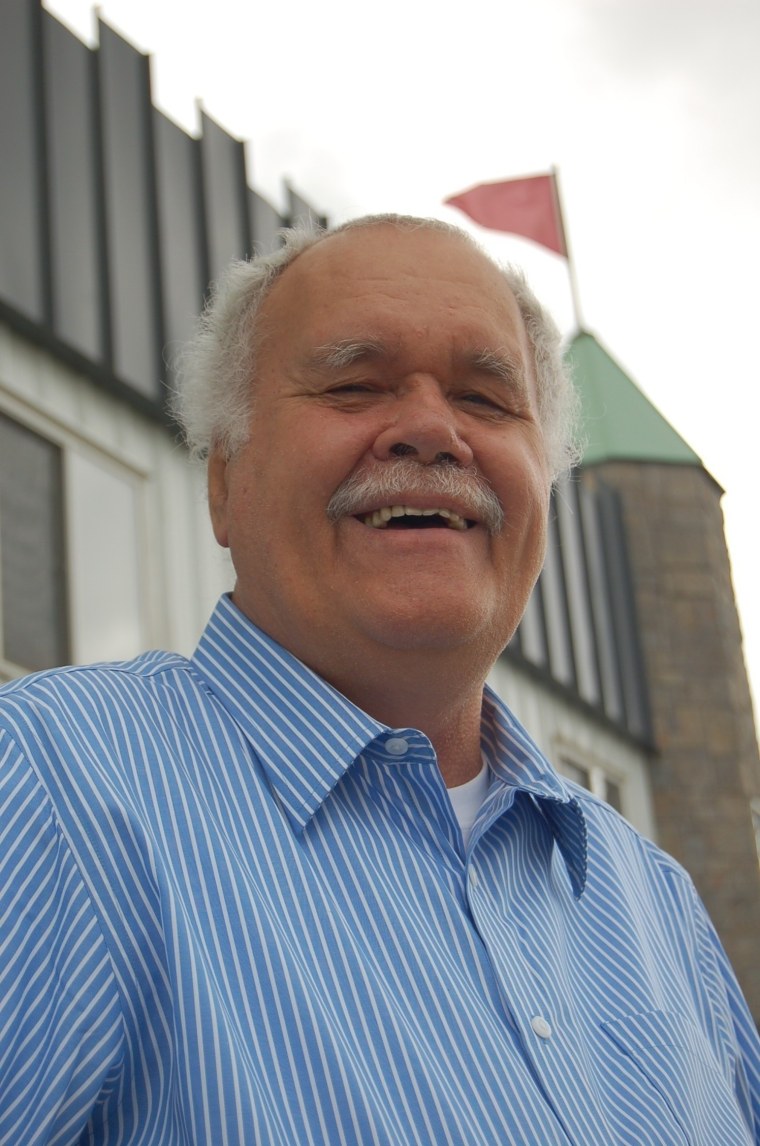During the 40 years convicted murderer James LeRoy Iverson watched from his prison cell window, he saw a field transform from a nesting ground for geese to a Wal-Mart Supercenter site.
A week after being paroled as North Dakota's longest-serving inmate, the 70-year-old got his first look inside the Bismarck store.
"I'd never been to a Wal-Mart before — they have oodles and oodles of stuff in there," said Iverson, dressed in a crisp new blue jeans and shirt purchased from the retail giant. "It took me three hours to walk all the way around that place."
Four decades after his 1969 conviction for strangling two women in Grand Forks, Iverson is among a growing number of senior parolees returning to communities nationwide.
He has taken walks and taxis around town since his release earlier this month and said he's in awe of the changes. He likened it to having been in a time capsule.
"People dress different — I see a lot of people walking around in shorts and more men with beards," said Iverson, who had to abandon his first attempt at figuring out how to use a cell phone.
The U.S. prison population has grown 500 percent to 1.5 million since the early 1970s, said Ryan King, a policy analyst with The Sentencing Project, a Washington-based group that supports criminal justice reform. The number of state and federal inmates aged 55 years and up more than doubled from 32,000 in 1995 to 70,000 in 2007, the latest figures available.
"More people are in prisons and they're staying for longer periods," King said. "And more than 90 percent of them will come out at some point."
Little chance of reoffending
The first wave of people sentenced under stricter criminal sanctions established some 30 years ago are now being released, said Marquette University criminal law professor Michael O'Hear. And while long-serving inmates sometimes become dependent on prisons, cases of elderly ex-cons reoffending just to return are rare, he said
"Most people who are in want to be out," he said.
Jeremy Travis, president of John Jay College of Criminal Justice in New York, agreed there is little danger of reoffense from older adults.
"It's not to say there is no risk but statistically, they are long past the high crime years of their lives," he said.
Iverson, who believed he'd die behind bars, said he sees life on the outside as a short second chance.
The former taxi driver was sentenced to life in prison for killing Dianne Bill and 25 to 30 years for killing Carol Mayers. The women's bodies were found in Mayers' Grand Forks apartment in November 1968 after they failed to show up for work at a restaurant. Calls to family members seeking comment on Iverson's release were not returned.
Iverson said he was intoxicated and doesn't remember killing the women.
"I don't know," he said, looking away. "I wish they had DNA. I want to know for me and my family because this has been a stigma for them."
‘More serenity’
Iverson served several shorter jail and prison stints for burglary before his murder conviction. He said he targeted upscale homes and, most times, he was drunk.
"I came from a poor family," Iverson said. "It seemed like they had everything and we had nothing. There was a lot of anger there."
Iverson said he attended Alcoholics Anonymous and anger management classes for decades in prison.
"I wouldn't think of doing anything now because I'm sober and I've taken anger management, which has given me a feeling of more serenity," he said.
The Parole Board granted Iverson's 10th request for early release last year. John Olson, chairman of the North Dakota Parole Board, declined to say whether the families had raised objections to Iverson's release. But Iverson said they protested each time.
Transition into free society
Iverson must wear a monitor and remain in Burleigh and Morton counties, though the former National Guard soldier may travel to Fargo for Veterans Administration services. He is barred from contact with the victims' families.
He was released to the Bismarck Transition Center to help ease the transition. If he has no problems, his parole will end Sept. 16, 2010. Without parole, his release date would have been Nov. 7, 2010.
"The object here is to provide some transition for his way back to a free society," Olson said. "Good gosh, gasoline was 15 cents a gallon when this guy went to prison. He has some major challenges."
Olson said North Dakota's prison population has grown from about 400 in the 1970s to about 1,400. He could not say how many inmates were getting on in years.
Authorities cite a supportive family as crucial to a successful transition back to society. Iverson said he has eight siblings and two children. Only one of his siblings has refused to have contact with him over the years and since his release, he said.
Iverson said he suffers from diabetes and other illnesses and has been turned down for Social Security because he lacks a work history outside prison. But he hopes an associate degree in hotel and restaurant management earned in prison will help him land a job.
"I want to work, and I'll do anything, even volunteer work," Iverson said. "Attending Bible school wouldn't hurt, either. I'm going to need all the luck I can get."
